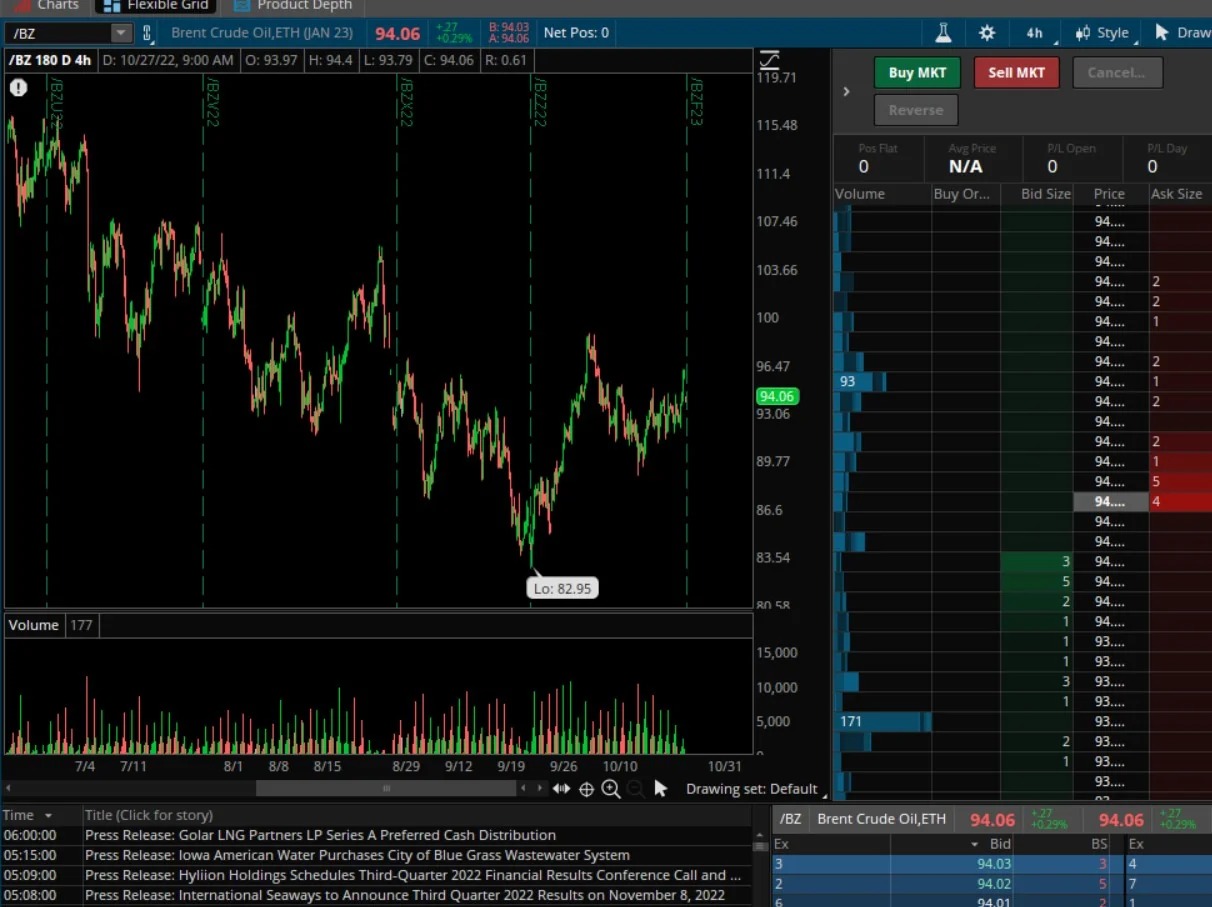

Finance
How Has COVID Affected Insurance Industry
Published: November 14, 2023
Discover the impact of COVID on the finance industry, specifically insurance. Learn how the pandemic has transformed insurance policies and coverage.
(Many of the links in this article redirect to a specific reviewed product. Your purchase of these products through affiliate links helps to generate commission for LiveWell, at no extra cost. Learn more)
Table of Contents
Introduction
The COVID-19 pandemic has had a profound impact on various sectors of the economy, and the insurance industry is no exception. As the world grapples with the challenges brought about by the global health crisis, insurers have had to navigate through unprecedented circumstances and adapt to the changing landscape.
Insurance, a sector that thrives on risk assessment and mitigation, has witnessed a significant transformation in response to the pandemic. From an increase in insurance claims to changes in premium rates and coverage, the industry has had to swiftly respond to the evolving needs of its customers.
This article explores the various ways in which COVID-19 has affected the insurance industry and examines the steps taken by insurers to adapt to the new normal. It delves into the impact on insurance claims, changes in premiums and coverage, the shift towards digitalization and remote work, increased demand for health and life insurance, challenges in risk assessment, regulatory updates, and policy changes, as well as collaboration and innovation within the industry.
It is important to note that the information presented here is a general overview and may vary based on the specific region and insurance company. The effects of COVID-19 on the insurance industry continue to evolve, and it is crucial for insurers and customers alike to stay informed about the latest developments.
Now, let’s examine how the pandemic has influenced insurance claims.
Impact on Insurance Claims
The COVID-19 pandemic has significantly increased the number of insurance claims across various sectors. With businesses forced to shut down or operate at limited capacity, many have turned to their insurance policies for financial protection. Business interruption claims have been a major area of concern, as companies have suffered substantial losses due to mandated closures and supply chain disruptions.
Another area of impact has been travel insurance. As travel restrictions were implemented worldwide, the number of trip cancellation and interruption claims skyrocketed. Individuals who had planned vacations or business trips had to cancel or change their plans, resulting in a surge in claims.
Additionally, the health insurance industry experienced a surge in claims related to COVID-19 testing, treatment, and hospitalization. Insurers had to quickly adapt to the increased demand and adjust their policies accordingly to cover the expenses associated with the virus.
While the increase in claims has put substantial pressure on the insurance industry, some insurers have faced challenges in processing and paying out these claims. The sheer volume of claims and the complexity surrounding them have presented logistical hurdles for many insurance companies.
Moreover, fraudulent claims have become a growing concern. Unscrupulous individuals and criminal organizations have attempted to take advantage of the crisis by submitting false claims or exaggerating the extent of damages. Insurers have had to implement rigorous fraud detection measures to protect themselves and their legitimate policyholders.
In response to the surge in claims, insurance companies have been actively reviewing their policies, exclusions, and coverage limits. Some have even introduced new products specifically tailored to meet the changing needs of customers in these challenging times.
Now that we have explored the impact on insurance claims, let’s delve into the changes in premiums and coverage.
html
Changes in Premiums and Coverage
The COVID-19 pandemic has not only impacted insurance claims but has also led to significant changes in premiums and coverage offered by insurance companies. The uncertainties introduced by the pandemic have forced insurers to reassess risk factors and adjust their pricing accordingly.
One of the most notable changes has been the adjustments in premium rates for various insurance policies. Insurers have had to consider the increased risks associated with the pandemic, such as business interruptions and health-related claims, which have affected the overall underwriting process. As a result, premium rates have seen fluctuations across different lines of insurance coverage.
Furthermore, insurers have revisited and modified coverage terms to address the specific risks posed by COVID-19. This has led to the inclusion of pandemic-related coverage exclusions in certain policies. For example, some business interruption policies now explicitly exclude coverage for losses due to pandemics or government-mandated shutdowns. Travel insurance policies may have added exclusions for cancellations related to pandemics or travel advisories.
On the other hand, new insurance products have emerged in response to the pandemic. For instance, there has been a surge in demand for pandemic-specific coverage, such as event cancellation insurance or coverage for communicable diseases. Insurers are adapting to these new demands by offering tailored policies that address the unique risks faced by businesses and individuals during this time.
It is important for policyholders to carefully review their insurance policies and understand any changes in premiums or coverage resulting from the pandemic. Consulting with insurance agents or brokers can help clarify the extent of coverage and any exclusions that may now be applicable.
As the insurance industry continues to navigate the challenges posed by COVID-19, policyholders can expect ongoing adjustments in premiums and coverage. Insurers will closely monitor the evolving situation and make necessary changes to ensure the financial stability of their business while providing adequate protection to their customers.
Now, let’s explore how the insurance industry has embraced digitalization and remote work in response to the pandemic.
html
Shift towards Digitalization and Remote Work
The COVID-19 pandemic has accelerated the digital transformation within the insurance industry, prompting a rapid shift towards digitalization and remote work. In order to continue serving their customers effectively while adhering to social distancing measures, insurance companies have embraced technology like never before.
One of the most notable changes has been the adoption of digital platforms for customer interactions and transactions. Insurance companies have invested in user-friendly online portals and mobile applications, allowing policyholders to manage their policies, submit claims, and communicate with insurance representatives remotely. This shift has not only enhanced convenience for customers but has also streamlined internal processes, reducing paperwork and manual interventions.
Remote work has become the new norm for many insurance professionals. With the help of virtual collaboration tools, insurance agents, underwriters, claims handlers, and other employees have seamlessly transitioned to working from home. This has not only ensured the safety and well-being of employees but has also enabled the uninterrupted delivery of essential insurance services.
Additionally, the use of digital tools and automation has improved the efficiency of various insurance processes. Insurers are leveraging artificial intelligence and machine learning algorithms to automate tasks such as claims processing, risk assessments, and fraud detection. This not only saves time but also enhances accuracy and reduces the potential for human error.
Insurtech startups have also been at the forefront of driving digitalization within the industry. They have introduced innovative solutions like telematics, wearables, and data analytics to collect and analyze customer data. This enables insurers to offer personalized policies, rewards for safe behavior, and more accurate risk assessments.
The shift towards digitalization and remote work is likely to have a lasting impact even beyond the pandemic. Customers are now accustomed to the convenience and flexibility offered by digital insurance solutions, and insurers are recognizing the benefits of increased efficiency and reduced costs associated with remote work.
However, it is essential for the insurance industry to maintain a balance between digitalization and the human touch. While technology brings numerous advantages, it is crucial to continue providing personalized customer service and human expertise to ensure policyholders feel valued and supported.
Now that we have explored the shift towards digitalization and remote work, let’s dive into the increased demand for health and life insurance.
html
Increased Demand for Health and Life Insurance
The COVID-19 pandemic has heightened awareness of the importance of health and life insurance, leading to an increased demand for these types of coverage. Individuals and families have become more conscious of the need to protect their health and financial well-being in the face of uncertain times.
Health insurance has seen a significant surge in demand as people prioritize securing coverage for medical expenses. The pandemic has highlighted the vulnerabilities in healthcare systems worldwide, making individuals realize the importance of comprehensive health coverage. This has led to an increased interest in health insurance policies that offer extensive coverage for hospitalization, COVID-19 testing, and treatment.
Similarly, there has been a notable increase in demand for life insurance. The fear and uncertainty caused by the pandemic have prompted individuals to reassess their life insurance needs. Many people are seeking policies that can provide financial protection for their loved ones in the event of their untimely demise. The pandemic has emphasized the importance of planning for the future and safeguarding the financial security of family members.
Insurance companies have responded to this increased demand by introducing new products and modifying existing ones to meet the evolving needs of customers. They have introduced COVID-19 specific coverage options, such as telehealth services, mental health support, and coverage for vaccine-related expenses, to address the specific challenges posed by the pandemic.
In addition to the increased demand for traditional health and life insurance, there has also been a rise in interest for specialized insurance products. Critical illness insurance, income protection insurance, and disability insurance have gained popularity as individuals seek comprehensive coverage to mitigate the financial impact of unexpected events on their lives and livelihoods.
The increased demand for health and life insurance is likely to have a lasting impact on the industry. As individuals become more aware of the risks and uncertainties in life, insurance will continue to play a vital role in providing financial security and peace of mind.
Now, let’s examine the challenges faced by insurers in risk assessment.
html
Challenges in Risk Assessment
The COVID-19 pandemic has posed significant challenges to insurers in assessing and managing risks. The rapid and unpredictable nature of the crisis has made it difficult for insurers to accurately calculate and price risks associated with various insurance policies.
One of the main challenges has been the lack of historical data and actuarial models to accurately predict the impact of a pandemic of this magnitude. Traditional risk assessment techniques relied on historical data from past events, but the unprecedented nature of COVID-19 has rendered such data less relevant. Insurers have had to adapt and develop new methodologies to assess the risks and uncertainties introduced by the pandemic.
The dynamic nature of the pandemic further complicates risk assessment. As the situation evolves, new information and research emerge, leading to constant revisions of risk models. Insurers must stay updated with the latest scientific findings and government guidelines to ensure accurate risk assessment and provide appropriate coverage to their policyholders.
Additionally, the interconnectedness of risks and the cascading effects of the pandemic have made it challenging to isolate and quantify specific risks. For example, disruptions in the supply chain can trigger a chain reaction of losses for businesses, affecting various types of insurance coverage such as business interruption, liability, and property insurance.
The economic impact of the pandemic has also introduced uncertainties in risk assessment. Insurers must consider the volatile market conditions, fluctuating business landscapes, and financial stability of their policyholders when evaluating risks. This requires a more holistic approach that takes into account both macroeconomic factors and individual business viability.
Furthermore, the increased prevalence of remote work and digital platforms has introduced new cybersecurity risks. Insurers must now assess the cybersecurity measures in place for policyholders and evaluate the potential liabilities associated with cyber attacks and data breaches.
To overcome these challenges, insurers are leveraging advanced technologies and data analytics to improve risk assessment. They are investing in predictive models that utilize real-time data to track and monitor risks associated with the pandemic. Collaborations with research institutions and data providers are also aiding in developing more accurate risk assessment frameworks.
It is important to note that the long-term effects of the pandemic are still unfolding, and insurers will continue to face challenges in risk assessment as the situation evolves. Adapting to the changing risk landscape and developing innovative risk management strategies will be crucial for the insurance industry to navigate through these uncertain times.
Now, let’s explore the regulatory updates and policy changes implemented in response to the pandemic.
html
Regulatory Updates and Policy Changes
The COVID-19 pandemic has sparked a flurry of regulatory updates and policy changes within the insurance industry. Governments and regulatory bodies around the world have stepped in to address the emerging risks and challenges presented by the crisis, while also ensuring consumer protection and stability within the insurance market.
One of the key areas of regulatory focus has been business interruption insurance. Governments and regulators have provided guidance and clarification regarding coverage and claims related to pandemic-related business interruptions. Some jurisdictions have implemented measures to require insurers to cover certain non-damage business interruptions caused by the pandemic, while others have introduced temporary provisions or established dedicated funds to support affected businesses.
Additionally, insurers have responded by introducing new policy endorsements or exclusions related to pandemics. These changes aim to clearly outline the coverage and limitations within insurance policies, ensuring transparency and managing expectations for both insurers and policyholders.
Regulators have also closely monitored the financial stability of insurance companies amidst the economic uncertainties brought about by the pandemic. They have implemented stress testing and increased reporting requirements to evaluate solvency and ensure insurers can meet their financial obligations to policyholders.
Furthermore, in the realm of health insurance, regulators have encouraged insurers to expand coverage and enhance policy benefits to address the specific needs of policyholders during the pandemic. This includes covering COVID-19 testing, treatment, and vaccinations, as well as promoting telehealth services to ensure continued access to healthcare while minimizing in-person visits.
As the insurance industry increasingly adopts digital platforms and remote work, regulators have also responded to ensure the protection of consumer data and privacy. They have enhanced requirements for data security and implemented guidelines to mitigate the risks posed by cyber threats and data breaches.
Overall, the regulatory environment surrounding the insurance industry remains dynamic as governments and regulatory bodies continue to monitor and adapt to the evolving challenges posed by the pandemic. Insurers must stay informed about the latest regulatory updates and comply with the prescribed guidelines to maintain compliance and build trust among policyholders.
Now, let’s explore how collaboration and innovation have shaped the insurance industry’s response to the pandemic.
html
Collaboration and Innovation within the Industry
The COVID-19 pandemic has prompted collaboration and innovation within the insurance industry, as companies join forces to navigate the challenges and find new solutions to meet the changing needs of their customers.
One area of collaboration has been between insurers and healthcare providers. Insurance companies have partnered with healthcare organizations to promote preventive measures, offer telehealth services, and provide guidance to policyholders on managing their health during the pandemic. This collaboration has facilitated access to healthcare resources and ensured the well-being of policyholders.
Insurers have also collaborated with insurtech startups and technology firms to drive innovation within the industry. The use of advanced analytics, artificial intelligence, and digital platforms has revolutionized insurance processes, enabling insurers to streamline operations, improve risk assessment, and enhance the overall customer experience.
Furthermore, the insurance industry has joined hands with governments and regulators to address the unique challenges posed by the pandemic. This collaboration has led to the implementation of regulatory updates, policy changes, and financial support measures for affected businesses and individuals.
Insurance companies have also fostered collaboration among their own teams and employees. Remote work has necessitated increased communication and collaboration through virtual platforms, enabling teams to share knowledge, exchange ideas, and collaborate on innovative solutions.
Innovation has been a key driver of the industry’s response to the pandemic. Insurers have introduced new products and coverage options tailored to address the specific risks and needs brought about by the crisis. For example, coverage for remote work-related liabilities, virus transmission coverage, and niche policies for impacted industries have emerged as insurers strive to stay responsive to customer demands.
Insurtech startups have played a significant role in driving innovation during these challenging times. They have introduced cutting-edge technologies such as telematics, wearable devices, and data analytics to personalize policies, improve risk assessment, and enhance claims management.
Moreover, insurers have reevaluated their distribution models and embraced digital channels to reach customers effectively. Online platforms, social media, and direct-to-consumer approaches have gained significance, enabling insurers to connect with policyholders and provide seamless services remotely.
The collaboration and innovation witnessed within the insurance industry during the pandemic highlight the sector’s resilience and ability to adapt to change. By embracing technology, fostering collaboration, and embracing innovative solutions, insurers have been able to navigate the challenges and continue serving their customers effectively.
Now, let’s conclude our exploration of the effects of COVID-19 on the insurance industry.
html
Conclusion
The COVID-19 pandemic has had a profound impact on the insurance industry, triggering significant changes in claims, premiums, coverage, and risk assessment. Insurers have faced challenges in processing claims, adapting to the uncertainties introduced by the pandemic, and reassessing risk factors.
The increased demand for health and life insurance reflects a heightened awareness of the need for financial protection amidst uncertain times. Insurers have responded by introducing new products and enhanced coverage options.
The industry’s shift towards digitalization and remote work has enabled insurers to continue serving customers while ensuring the safety of employees. Technology and data analytics have been harnessed to improve operational efficiency and enhance risk management.
Regulatory updates and policy changes have been implemented to address the risks and challenges of the pandemic, ensuring consumer protection and stability within the insurance market.
Collaboration and innovation have played a crucial role in the industry’s response to the crisis. Insurers have partnered with healthcare providers, embraced insurtech solutions, collaborated with government authorities, and fostered internal teamwork to develop innovative solutions and adapt to the changing landscape.
As the world continues to navigate the effects of the pandemic, the insurance industry will need to remain agile and adaptable. Ongoing collaboration, innovation, and a customer-centric approach will be vital to address new risks, meet evolving customer needs, and provide the necessary financial protection and peace of mind.
In summary, the COVID-19 pandemic has brought about unprecedented challenges and opportunities for the insurance industry. By embracing digitalization, fostering collaboration, and prioritizing innovation, insurers are well-positioned to navigate the ever-changing landscape and continue playing a crucial role in protecting individuals, businesses, and societies at large.














